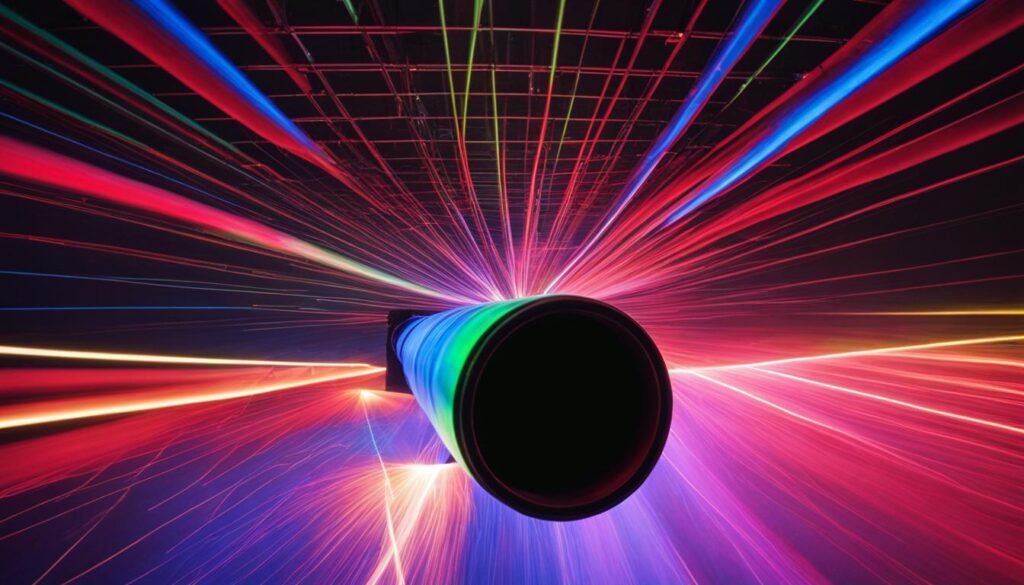Contents

Source: Wikipedia
<>
High-energy Lasers: A Comprehensive Overview
Introduction
High-energy lasers are advanced pulsed lasers that emit intense light pulses with significant pulse energy. These lasers find applications in various fields due to their ability to deliver high optical peak powers.
Types of High-energy Lasers
Q-switched Lasers
Q-switched solid-state lasers are commonly used for high-energy applications. These lasers operate in the nanosecond regime and are often based on laser crystals or laser glasses.
Free-running Lasers
Some high-energy lasers operate in free-running mode without a Q-switch, resulting in longer pulses with lower peak powers.
Amplified Sources (MOPAs)
Optical amplifiers are utilized to increase pulse energy, leading to devices known as master oscillator power amplifiers (MOPAs).
Beam Combining
Techniques like spectral beam combining and coherent beam combining are employed to achieve the highest pulse energies in some high-energy lasers.
Types of High-energy Lasers
Chemical Lasers
Chemical lasers use chemical reactions to generate extremely high pulse energies, making them suitable for specific military applications.
Free-electron Lasers
Free-electron lasers can produce high pulse energies across a wide range of spectral regions, although they are typically large and stationary devices.
Nonlinear Frequency Conversion
Nonlinear frequency conversion methods are used to obtain light pulses in wavelength regimes not directly accessible with high-energy lasers.
Technical Considerations
Pulsed Pumping
High-energy lasers generally require pulsed pumping to achieve high pump powers, which are necessary for generating intense pulses.
Thermal Effects
Intense pumping in high-energy lasers leads to significant heating of the laser gain medium, which can impact laser operation and beam quality.
Optical Damage
High pulse energies in lasers can cause optical damage to components within the laser resonator, necessitating the use of components with high laser damage thresholds.
Pulse Duration
Short pulse durations are desired in high-energy lasers for higher peak powers, but achieving this can be challenging due to various technical constraints.
Applications of High-energy Lasers
High-energy lasers find applications in diverse fields, including laser weapons, nuclear fusion research, laser material processing, remote sensing, medical treatments, and scientific research.
Conclusion
High-energy lasers play a crucial role in various industries and research fields, offering intense light pulses with significant energy for a wide range of applications.

Source: The Strategy Bridge
Feel free to comment your thoughts.



